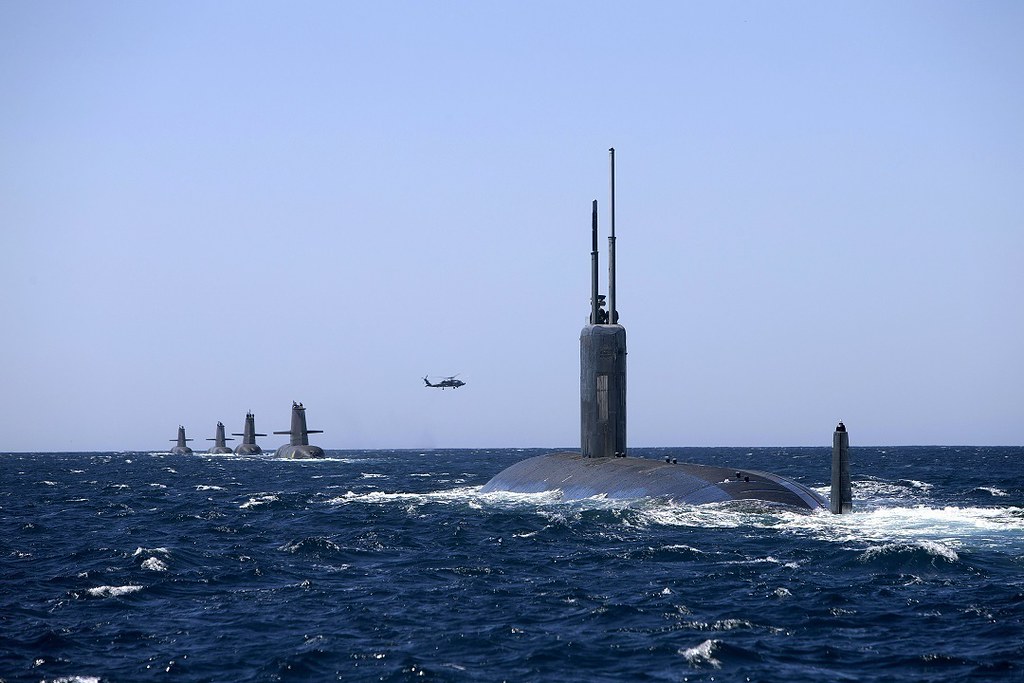A new joint defence partnership will see the United States, Britain and Australia join together into what is already called AUKUS (Australia-UK-US). The objective of the partnership is for the three allies to share information, technology and expertise in areas such as artificial intelligence, cyber security, undersea systems and long-range strike capabilities.
The central focus of the partnership, however, is the nuclear domain, primarily the development of nuclear-powered submarines. The United States has since long switched to a non-conventional submarine fleet, which has several advantages over conventional diesel-powered models. They have a greater range of action, are quieter and can carry a larger load. Britain also made this change in the 1960s. It recently planned to renew part of its fleet. Until now, only Australia did not operate this technology. Thus, this is a significant change in its defence policy, which risks fuelling the arms race in the region. Canberra justifies the switch to a nuclear fleet precisely by the deterioration of the strategic environment, even if the tripartite announcement does not explicitly mention China. There is no doubt that the prospect of greater interoperability with its allies is also a major reason for this choice.
This announcement means that Canberra will cancel its project to acquire 12 conventional submarines it had signed with the French Naval Group. In the planning stages since 2009, the purchase had been heavily criticized, among other things for cost overruns, in what turned out to be the most expensive arms purchase in Australia’s history – $90 billion. Negotiations were held last winter between the Australian and French governments to save the deal. The source of the problem was the desire to have the submarines built in Australia, which had set up a dedicated infrastructure to build its previous fleet. Speculation was that the French model was chosen because it was the conventional version of the nuclear submarine operated by the French Navy, leaving Canberra the option of choosing the same model during the project.
Instead, Australia will acquire at least eight submarines, the type of which has not yet been disclosed. These are likely to be multi-purpose attack submarines, but Australia’s emphasis on developing long-range strike capabilities could mean that it will also seek ballistic missile submarines. The allies have also confirmed that the fleet will be built in southern Australia. This choice raises several questions. For example, the timeline for the project is still unknown, while Australia’s current fleet of submarines is scheduled to be decommissioned in the 2030s. In order to avoid a loss of submarine capabilities, Canberra and Washington have agreed to station American submarines at Perth naval base. How the United States and Britain intend to share nuclear technology with their ally also remains unspecified. Nothing specific has been released, but this is a major challenge for Australia. Although it is the world’s third largest uranium exporter, it has no nuclear power plants and remains the only state in the G20 where nuclear energy is banned by federal law. Developing the infrastructure to sustain a nuclear fleet will necessarily increase the total cost of the program, which has not been discussed.
Although China is not included in the official announcements, the partnership must be understands as part of a balancing strategy against China and a response to its recent vindictive diplomacy in the region. China’s rise had already motivated Australia’s strategic defense update as it was for the British shift to the Indo-Pacific region. This announcement also follows a rise in tensions between Beijing and Washington, on the issue of Taiwanese independence among other things, which would be symptomatic of a new Cold War. In any case, this partnership heralds an important balance of power shift in the Indo-Pacific.
Canada’s absence from this new partnership has raised many eyebrows, as the country has been sidelined from the partnership. Indeed, Ottawa already co-operates closely with Washington, London and Canberra through the Five Eyes. Moreover, Canada just launched a program to renew its submarines, and could have benefited from this type of collaboration. How can we explain the situation then? On the Canadian side, the country has historically avoided engaging in the Indo-Pacific region in this way. While Canadian governments like to point to Canada as a Pacific nation, the presence and sustained investments the new partnership will require goes beyond its traditional defence strategy, which focuses primarily on the Euro-Atlantic region. Partisan politics may also be at play, as the Trudeau government has avoided taking a position in the growing tensions between Beijing and Washington. Joining the AUKUS would have been counter to this trend. On the other hand, it is worth noting that the Conservatives have been quite willing to join such Anglosphere initiatives in the past. It is also worth noting that Canada has often had difficulties with its military procurement projects, especially those involving submarines.
According to intelligence and defence sources, Canada’s absence could be explained primarily by a loss of confidence on the part of its close allies regarding the seriousness of Ottawa’s commitments in terms of defence and relations with China. Canada was not informed of the new agreement until the very last moment. The AUKUS thus points out that a small circle is being created within the Five Eyes, from which Canada and New Zealand would be excluded. It remains to be seen whether this new partnership will be sustainable and lead to the joint development and commissioning of new capabilities beyond submarines. If it does, Canada will see increasingly strenuous relationships with its three allies, who will have drastically increased the integration and interoperability of their armed forces and defence industries. As it stands, the current partnership is as much a reflection of Ottawa’s poor image of reliability as it is of the growing fear of the Chinese threat within AUKUS.





Comments are closed.